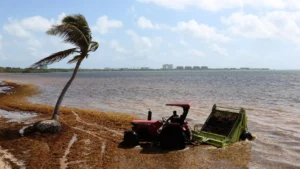Tornadoes in California: Understanding a Rare Phenomenon

Places like Tornado Alley in the central United States frequently link to tornadoes when it comes to severe weather events. Tornadoes, however, can happen everywhere, even in California. Contrary to other states, tornadoes are relatively uncommon in California, yet they can still pose serious threats and hurt nearby populations. This article will look at how often tornadoes occur in Tornadoes in California the causes of them, and the precautions that are done to lessen their consequences.
Understanding Tornadoes
Tornadoes are powerful and destructive rotating columns of air that extend from a thunderstorm cloud to the ground. A visible condensation funnel and high winds that can cause extensive damage often characterize them. However, the precise conditions required for their development are complicated and differ depending on regional factors. Tornadoes often form from violent thunderstorms.
Tornadoes in California: Frequency and Causes
Unique Geographical Factors
Mountains, deserts, and coastal regions are just a few of the numerous geographical factors of California that make it difficult for tornadoes to originate. The complicated topography, which includes the existence of mountain ranges, can interfere with the atmospheric conditions necessary for the production of tornadoes. As a result, as compared to states in Tornado Alley, tornadoes in California are relatively seldom.
Climate Patterns and Weather Systems
In California, tornadoes are frequently linked to particular meteorological patterns, such as air instability brought on by cold fronts, low-pressure systems, or thunderstorms. These systems can produce the conditions necessary for the genesis of tornadoes when they combine with regional phenomena like temperature differences and wind shear. Tornadoes do not occur as frequently or as intensely in California as they do in other parts of the country.
Tornado Preparedness and Safety
Early Warning Systems
To mitigate the risks associated with tornadoes, California has implemented early warning systems, including sirens, weather radio alerts, and smartphone notifications. These systems provide residents with timely information about severe weather conditions, allowing them to take necessary precautions and seek shelter.
Emergency Response Plans
Local authorities and emergency management agencies have developed comprehensive response plans to address tornado-related emergencies. These plans include strategies for evacuation, sheltering, and coordination with first responders. Regular drills and community education programs help raise awareness and ensure preparedness among residents.
Building Design and Construction
Building rules and construction methods are essential in lowering the risk of damage in tornado-prone locations. Using reinforced materials, solid foundations, and storm-resistant windows and doors can make structures withstand strong winds and flying debris. Public buildings and residential structures may also have tornado-safe rooms or shelters.
The Impacts of Tornadoes in California
Property Damage and Destruction
California tornadoes are rare and weak but still damaging. For example, winds and debris can harm buildings, trees, and life.
Impact on Local Communities
Tornadoes can have a significant negative effect on nearby areas by interfering with utilities, transportation, and other crucial services. After a tornado, recovery, and reconstruction activities frequently involve the entire community. For communities that are not used to tornadoes, the repercussions could be extremely difficult because they might not have the infrastructure or resources to react appropriately.
Psychological Effects
Individuals and communities may have psychological consequences as a result of tornadoes. These disasters’ abruptness and devastation might induce feelings of fear, anxiety, and trauma. For those impacted, post-tornado support mechanisms, such as counseling services and community outreach, are crucial for resolving the emotional toll.
Tornado Research and Forecasting
Advances in Tornado Detection
Advances in meteorological technology and research have improved the detection and tracking of tornadoes. Doppler radar systems can identify the characteristic rotation patterns associated with tornado formation, providing meteorologists with valuable information for issuing timely warnings.
Forecasting and Warning Systems
Tornado forecasting is still a difficult undertaking, particularly in areas like California with low tornado frequency. Nevertheless, meteorologists can recognize meteorological conditions that raise the possibility of tornado formation because of ongoing research and improved models. These developments help forecasting and early warning systems become more precise.
Climate Change and Tornadoes
Scientific research into the connection between tornadoes and climate change is underway. As a result, climate change may affect tornado patterns. For instance, temperature, moisture, and instability changes could alter tornado occurrences and intensities.
Conclusion
Tornadoes are rare but possible in California. To minimize their impact, we need tornado preparedness, warning systems, and emergency response. We also need to study and forecast tornadoes better. Awareness, readiness, and resilience can help communities cope with tornadoes.




